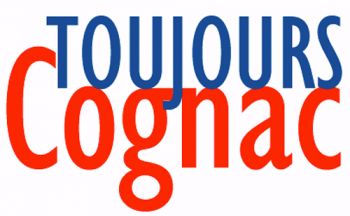Cognac Revisited
Cognac
is a charming city in southwest France, about 9O minutes
northeast of Bordeaux. Cognac and the surrounding area
remain quintessentially French, largely ignored by tourists
and thus offer reasonably priced hotels, restaurants and a
wonderful look at authentic French life. It’s a beautiful
place to visit, about a five-hour drive (or 2.5 hour high
speed train ride) from Paris. Cognac is dominated by the
slow and winding Charente River, which was historically the
main transport route used by Cognac producers to ship their
products by boat until trucks and highways made this method
obsolete.
To an
enthusiast, a visit to Cognac is like a trek to Mecca. All
the major houses are there and most of them welcome
visitors. But as glitzy as the numerous PowerPoint
presentations and talking mannequins are at the visitor
centers of some of the largest producers (I’m not kidding),
it’s far more interesting and fun to discover the smaller
houses, many of which make outstanding world-class Cognacs.
It is also rewarding to see the land, walk in the vineyards,
speak with growers, and view the distillation process. By
law, distillation must be finished each year by March 31 so
the wines being distilled don’t lose their freshness. Ugni
Blanc, which makes wine high in acidity and relatively low
in alcohol, is the grape used to make Cognac. Most Cognac
houses rely on long-term agreements with the region’s
independent growers to supply their grapes. A few produce
some of their own grapes, while others, like Frapin, grow
all their own. Being there and seeing the Cognac environment
provides an invaluable and well-rounded understanding of how
Cognac is made and the influence different soils have on
Cognac’s flavors, aromas and textures.
For example,
during my first visit there eight years ago I saw a highway
construction crew hammering away at some rocks beside the
auto-route. Once exposed, the white, chalky composition of
the rock was obvious and I understood why the Grande
Champagne and Petite Champagne appellations of Cognac’s
delimited region share the same namesake as the Champagne
sparkling wine region east of Paris. This soil is essential
in producing Cognac’s classic qualities, and is among the
key quality factors that set it apart from other brandies.
The soils of other crus there, Borderies, Fins Bois, Bons
Bois, and Bois Ordinaires, are comprised mostly of sand or
clay, and most Cognacs from there are generally seen as
inferior to the Grande and Petite Champagne areas. Nothing
is absolute, though, as Fins Bois and Borderies can produce
some very good Cognacs. Sometimes you’ll see Cognac labeled
as Fine Champagne, as is Remy Martin’s Extra, for example.
This means it’s a blend of grapes grown in both Grande and
Petite Champagne, with at least half of the grapes coming
from Petite Champagne.
Label
designations such as VS, VSOP, etc. can be quite confusing
to novice and experienced Cognac drinkers alike. These terms
refer to the average age of the brandies blended to make the
Cognac in that bottle. VS (very special) Cognac contains
brandies that are at least two years old. Brandies in VSOP
(very special old pale) are aged a minimum of four years;
and Napoleon, XO and higher bottlings of Cognac contain
brandies aged an average of six years. Most Cognac is made
from brandies aged far longer than these legal minimums.
Component brandy age in the majority of XO sold, for
example, is usually 2O years or older. Some rare Cognacs are
made of brandies from the 19th Century or older. Cognac is
almost always a blend of numerous vintages. There are some
single vintage Cognacs made from brandies whose grapes were
grown in one vintage only, but these are made only when a
particular vintage is outstanding. For anyone with an old,
dusty bottle of VS hoping that time has improved its
quality, I hate to burst your bubble, but once the aging
brandies are removed from barrel and bottled, the aging
process stops, so 3O years under a bed or in a closet won’t
transform a VS into an XO.
Young eau de vie
is extremely high in alcohol, about 7O percent. As they age
in oak barrels, alcohol levels come down naturally, and
producers also add distilled water periodically to bring the
level to around 4O percent. Of course, there is also the
“Angel’s Share” of aging Cognac that is lost each year
through evaporation in the cellars (those lucky
angels!).
|
These Remy Remy Frapin Frapin Frapin A.E. A.E. A.E. A.E. |

